Laundry Stripping is the Easy Solution for Dingy Gray Sheets, Towels, Underwear
Laundry stripping is a hot topic on the Internet, especially on cloth diapering and laundry forums. So is laundry stripping just a trendy topic or a fabulous laundry technique to solve an age-old problem?
The problem of dingy gray laundry is not foreign to my email inbox. In fact, it’s a subject that shows up a lot. Why do bedsheets, towels, socks, and t-shirts turn dull and gray, feel stiff, and lose absorbency?
It’s the residue and buildup of detergent, fabric softeners, and minerals from hard water that we’re not removing with regular washing methods. Add to that the accumulation of sweat, body soil, deodorant, lotions, shampoo, conditioners, oils, and more that adhere and get stuck to the fabric’s fibers, and what do we get? We think linens and clothes are clean but may come out with lingering odors and a poor appearance.
Laundry habits that cause dingy gray results
- Using cold water for every type of laundry load
- Going weeks between changing and washing bed sheets and towels, allowing them to become heavily soiled
- Using too much detergent, fabric softeners, or scent enhancers
- Using laundry detergent that does not contain enzymes that break down soil
- Failing to clean your washer
If anything in that list looks at all familiar, you need to know what laundry stripping is and how to do it.
Laundry stripping
Laundry stripping is the process of removing all the buildup and getting down to the bare fabric. It’s a specific process that removes gunk that attracts more grime and residue—all of it remaining even after regular laundry routines. The results of this process, known as laundry stripping, are nothing short of amazing.
As wonderful as this treatment can be, you need to know that it is a robust process that, if overdone, can be harsh on fabrics. It should be done only a few times a year, or when clothes and linens begin to show signs of getting stiff and dull.
The process of laundry stripping is not suitable for all fabrics. Do not attempt to strip the following:
- Any fabric that cannot tolerate hot water
- Delicate fabrics like silk, spandex, or lace that require hand washing or the gentle cycle
- Colored items that are not colorfast (the dye has not been stabilized, which means the process that follows will likely pull out the color and send it down the drain! Check the item’s label.)
Gather these items
Equipment
- bathtub, large sink, or large bin
- long wooden spoon, broom handle, or similar
- washing machine
Ingredients
- washing soda
- borax
- heavy-duty laundry detergent with enzymes (Tide with enzymes and Persil are highly effective. Check the labels to make sure your choice contains enzymes)
Instructions
Start clean
Start with clean laundry that has been separated into whites and colors (see above). You can strip an average size load of laundry at a time in a tub, sink, or bin that is large enough to allow the items freedom of movement during the process.
Do not mix whites with colors. Separate colors so that you are stripping items that are the same color and that you know are colorfast.
Laundry stripping is especially useful for washable whites.
Best Results
Your best laundry stripping results will be with cotton—bedsheets, underwear, and towels.
Hot water
Make sure the tub is clean. Fill it halfway with the hottest water available from the tap. Ideally, the water should be 140 F. If your water heater cannot be adjusted for the process, be prepared to add enough boiling water to make sure the water is very hot.
Add products
For a standard-size tub, add 1/4 cup washing soda, 1/4 cup borax, and 1/2 cup detergent with enzymes. If yours is a larger and or deep tub, double these amounts making sure the ratio is always twice as much detergent as the other products. Example: 1/2 cup each borax, 1/2 cup washing soda to 1 cup detergent, and so forth.
Be Certain
Washing soda is not the same as baking soda. Make certain you are using washing soda because it is much stronger than baking soda.
Add items
Drop items to be stripped into the hot water, making sure they are open and can move freely. Do not overload. Use the wooden spoon or broom handle to make sure everything is submerged and completely saturated.
Soak and stir
Now the process begins. Once an hour and until water is completely cooled (3 to 4 hours or longer), stir the items through the water. What you see—the color of the water—may be shocking.
Drain the swamp
As satisfying as this process can be, you may find this disgusting. Just keep in mind that dark water is all of the dirty, graying, dulling residues that have built up in the linens and clothing. It really does look like swamp water. After a number of hours, when the water is back to room temperature, it’s time to pull the plug. Let it drain.
Squeeze out the water
Wring and squeeze as much water from the items as possible and transfer them to the washer.
Run a full washer cycle
Set the washer to Cold and run a normal cycle with an extra rinse if possible. Do not add any detergent or other products. If you are concerned that you have not fully rinsed away all of the stripping residue, run the items through another full cold cycle with an extra rinse.
Dry the laundry
Dry the laundry as you usually do in an automatic dryer, on a clothesline, or drying rack.
Enjoy!
I cannot adequately describe the satisfying joy this process gives. I took notes and photos of my maiden voyage on the sea of laundry stripping. I made a couple of minor mistakes, but nothing that prevented absolutely lovely results.
My first Laundry Stripping Adventure
I can’t recall a time when I was excited and at the same time, embarrassed to share my adventure with you. Excited because it’s a super dramatic solution to a common problem, embarrassed because it’s gross. Let me just put it this way: I would have sworn that I have the cleanest, whitest, softest laundry in town.
While everything I read and researched on stripping laundry suggested that every household has clothes and items that need to be stripped of residue and buildup, I didn’t really believe it. I didn’t have any dingy gray towels or sheets to test strip, or so I believed. But I do have these bathroom rugs.
Three heavy white bathroom mats have presented a total mystery. They’re at least 7 years old, and as often as I launder them—they have become less than brilliant white. Ah-ha! Those rugs would be my test items for laundry stripping.
At the last minute, I decided to throw in a pile of face cloths that had tattletale make-up stains and also a set of bedsheets I took them off our bed to make the process even more challenging and or successful.
Notice that the items do not appear to be noticeably gray or dirty—except for those rugs.
Here are the exact products I used. My local supermarket did not have a free and clear version of Persil with enzymes in stock, so I acquiesced to this “Original” version. It does contain fragrance, which we do not prefer. I will use this version in the future.
Next, I filled the large, deep bathtub with hot tap water and a few pots of boiling water—plus the three ingredients: 1/2 cup super washing soda, 1/2 cup borax and 1 cup heavy-duty detergent. (That tub is huge and for that reason I doubled the amounts from those stated above.)
I added the items and stirred them to get everything submerged and saturated. It didn’t take long to realize I had way too many items for one stripping session, but by now everything was soaking wet. So, I added more hot water.
Within about 15 minutes, this is what happened. Did I say “embarrassed?” More than that, I was stunned. Shocked!
After an hour, look at this.
It took a good 5 hours of soaking and hourly stirring for the water to completely cool. It got darker and blacker with each stir and hour of soaking. What on earth?! I could not believe what was happening. Gross! But at the same time, quite satisfying.
I drained the swamp, squeezed and wrung out the water, and proceeded to do three loads through the full washer cycle set on Cold (as above). By the time everything was dry and folded, this took the better part of a day. But oh, the results!
My very old white bath rugs look like new! They are fluffy, soft, and brilliantly white.
Look at that!
The sheets and towels? Better than new.
Updated maintenance
It has been nearly three years since I added laundry stripping to my laundry routine. After doing this four times with the white linens, towels, and mats we use regularly—and adding 1/2 cup of borax to every load of white and color laundry—I noticed something amazing. The stripping bath no longer turned ugly gray.
Currently, I will hold off on laundry stripping until needed. However adding 1/4 – 1/2 cup of borax to every load of laundry (depending on load size) —white and color—is making all the difference to keep whites white and colors bright and smelling great!
I have not added chlorine bleach for many months— it is just not needed (I used to go through gallons of it in what seemed like no time at all). Borax is amazing as it also eliminates odor and kills germs, too.
We participate in the Amazon Services LLC Associates Program, an affiliate advertising program designed to provide a means for us to earn fees by linking to Amazon, but at no cost to you.
More from Everyday Cheapskate
Please keep your comments positive, encouraging, helpful, brief,
and on-topic in keeping with EC Commenting Guidelines
Last update on 2024-04-25 / Affiliate links / Images from Amazon Product Advertising API

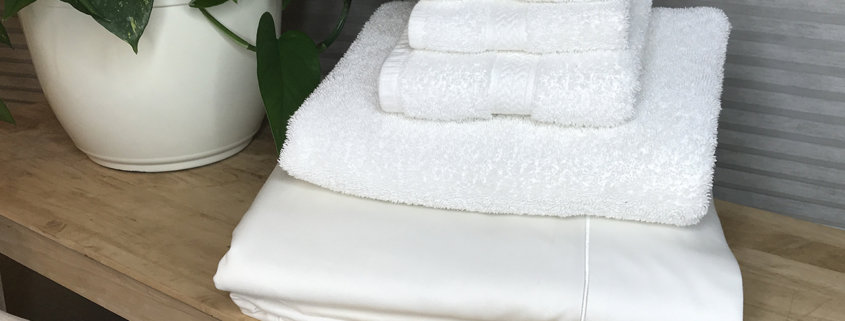

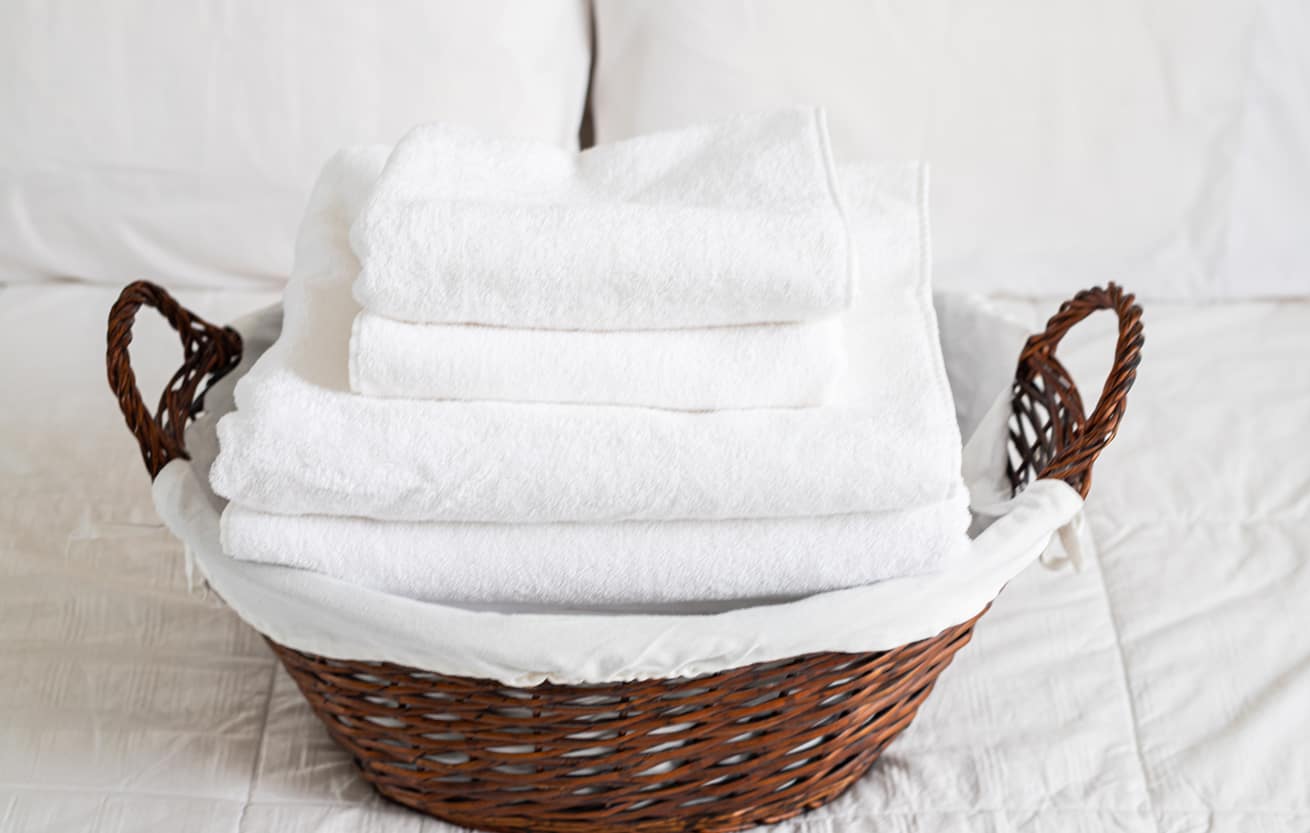
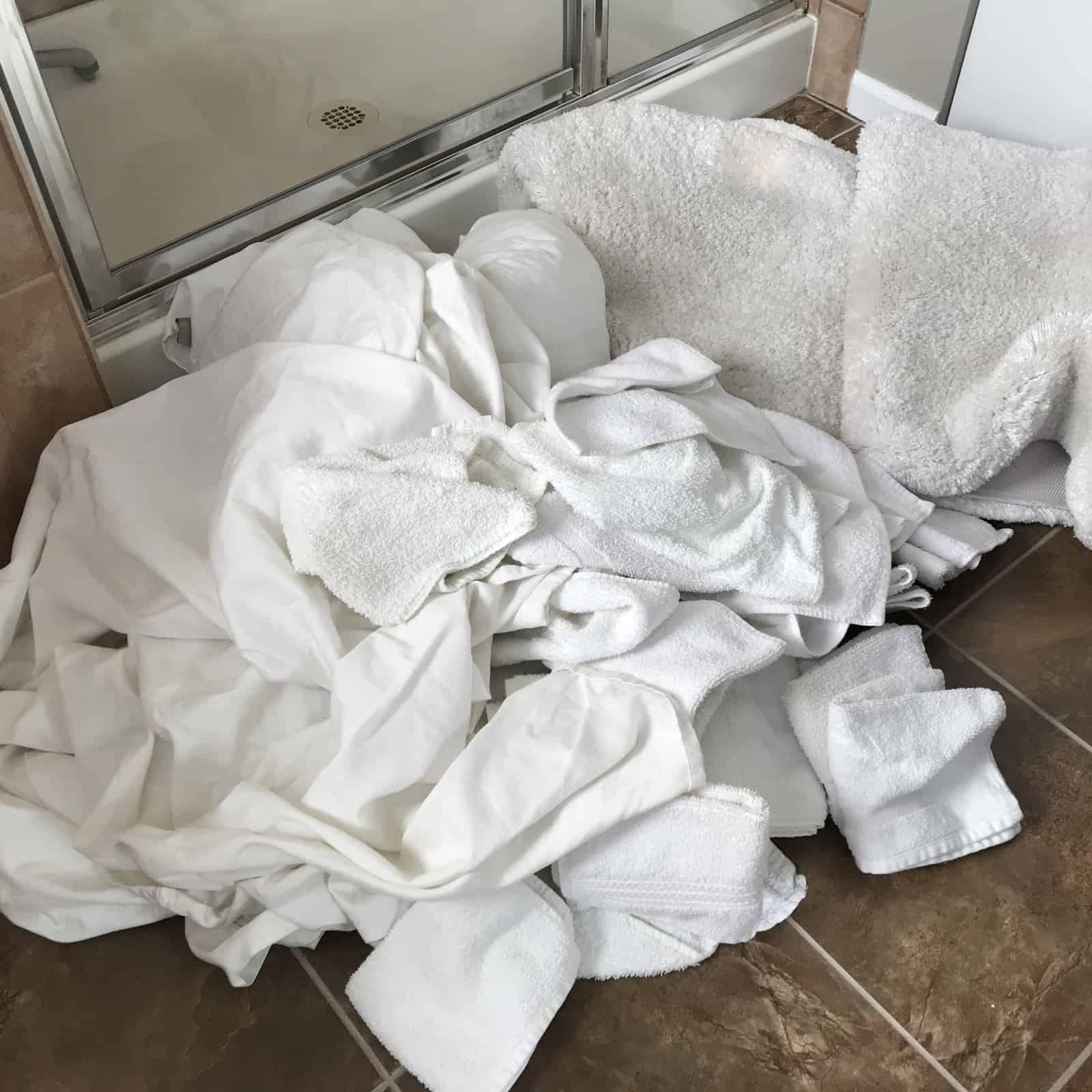
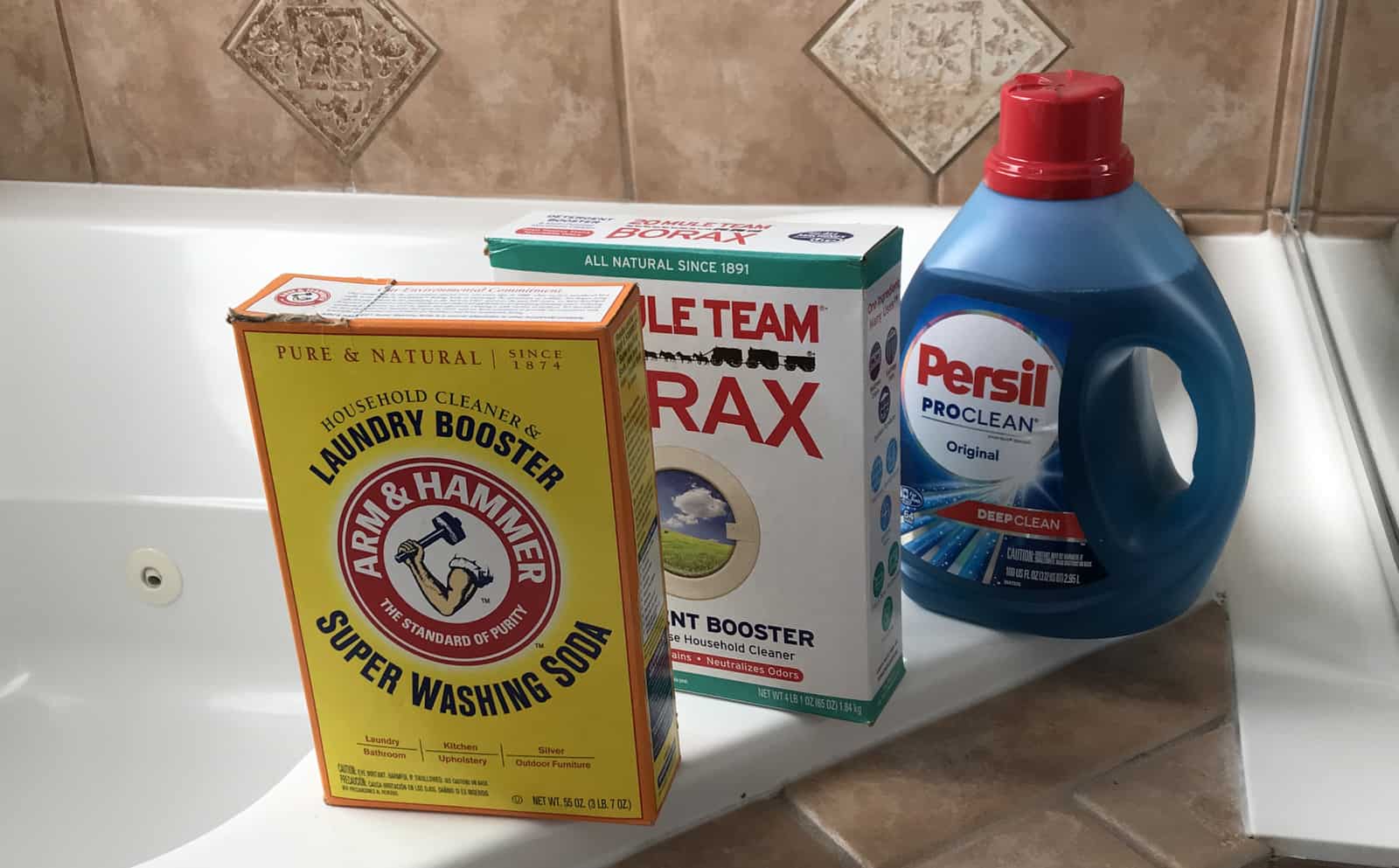
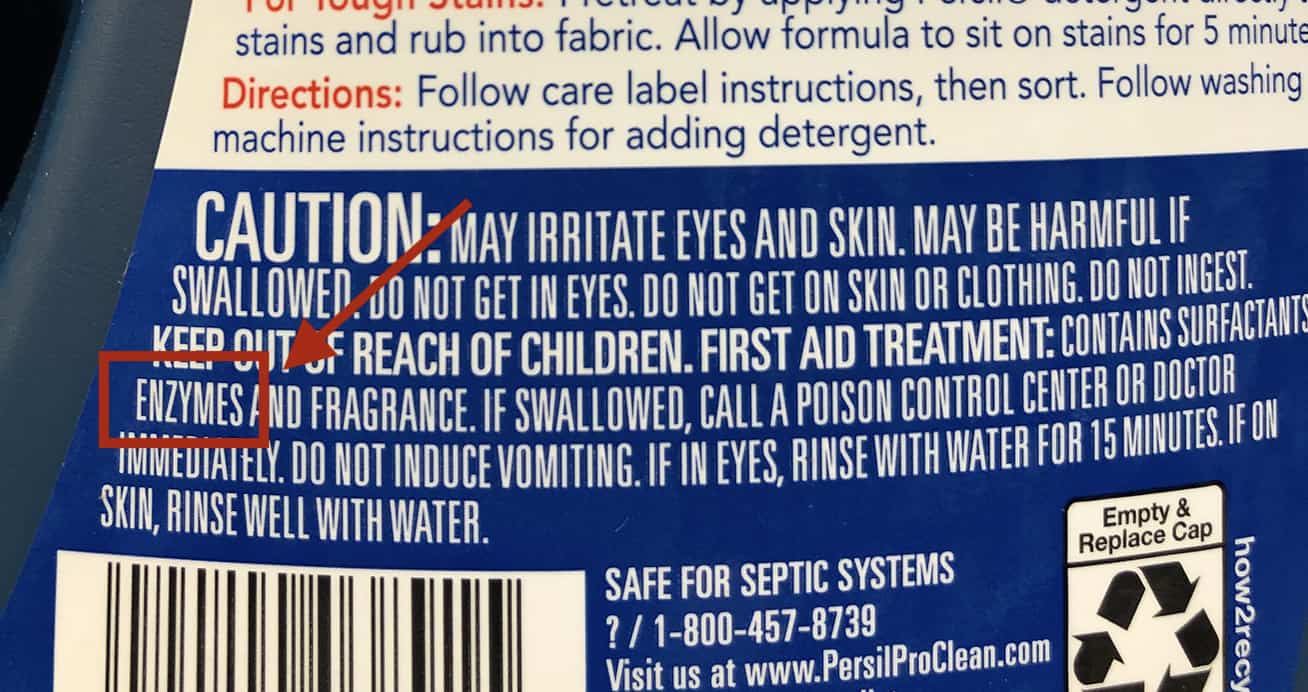
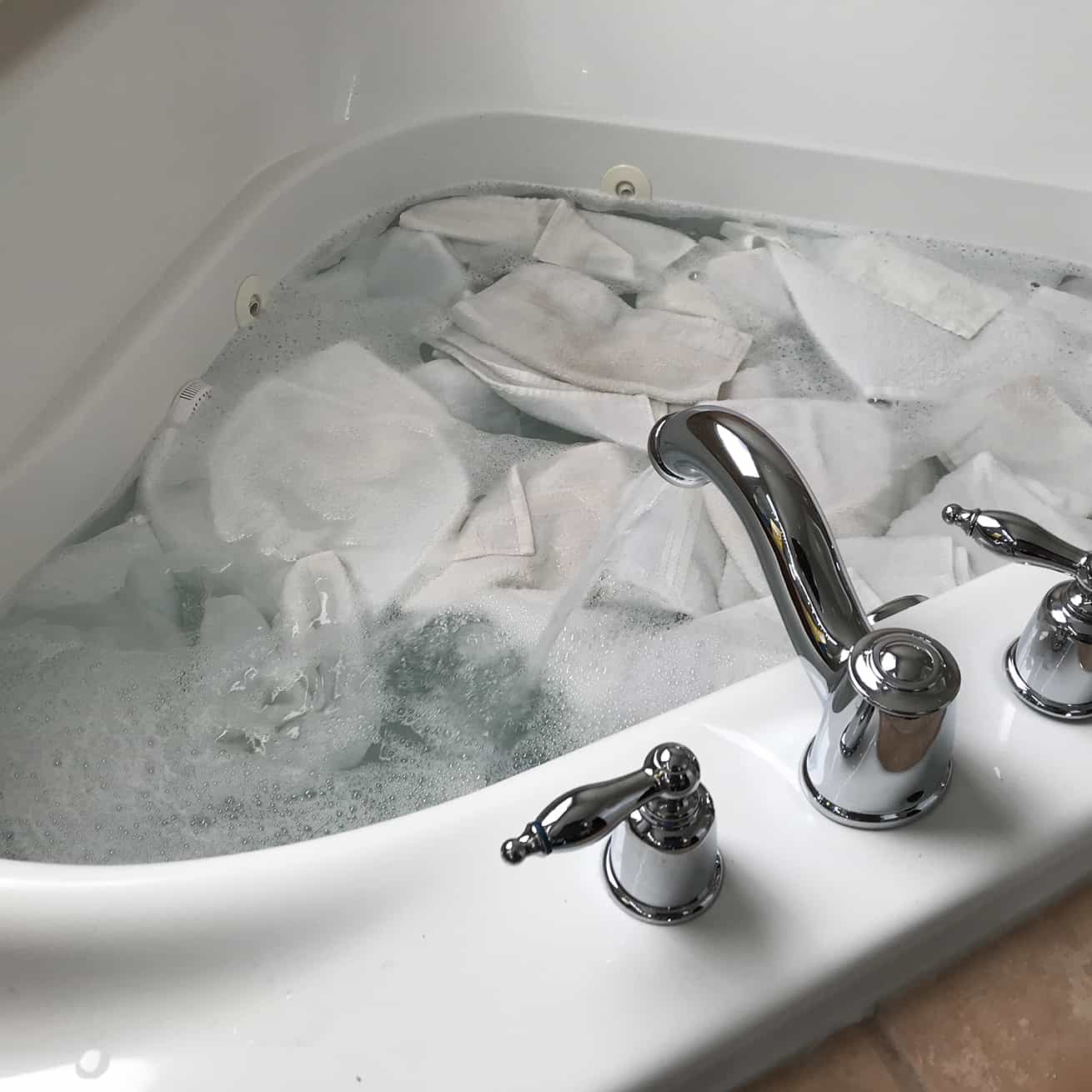
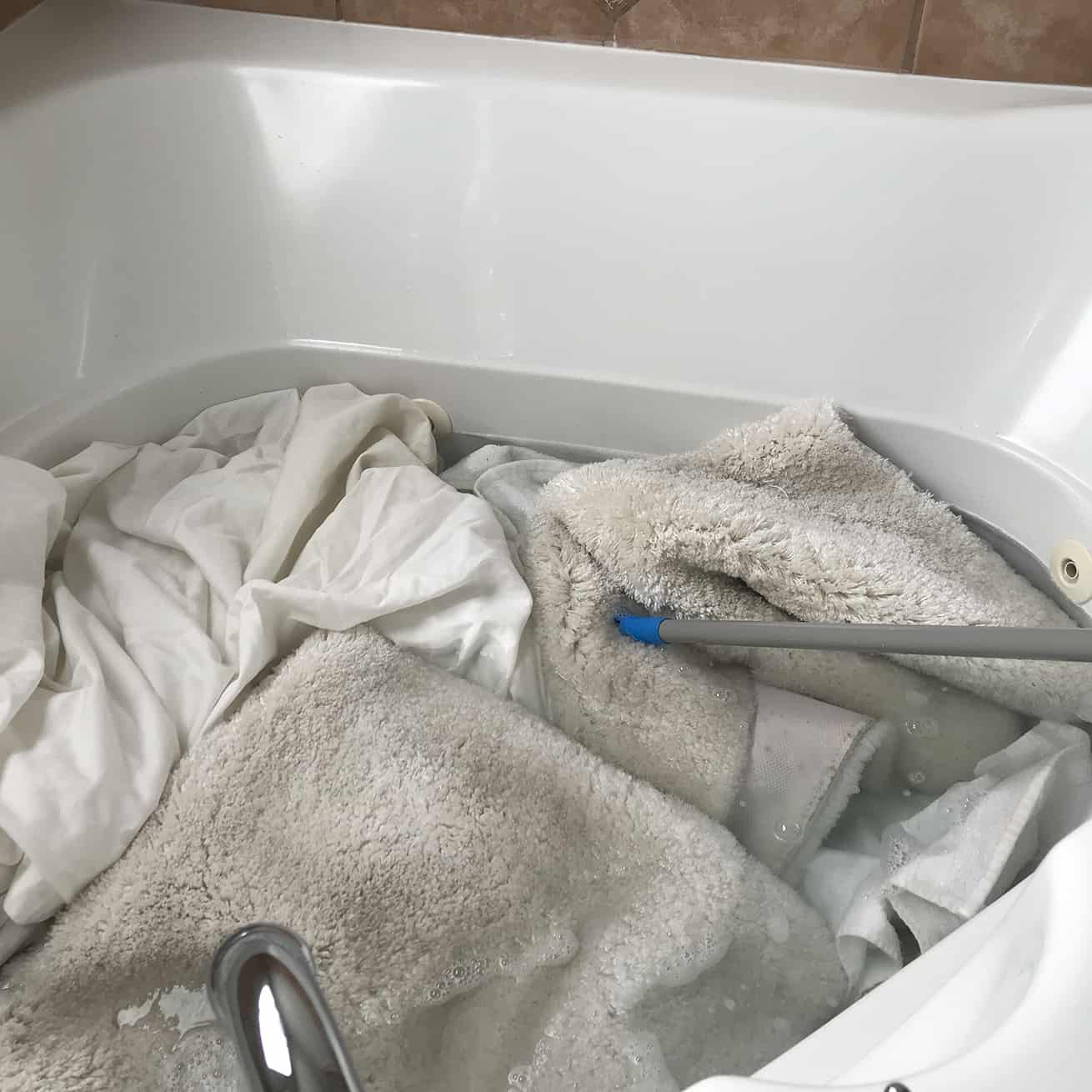
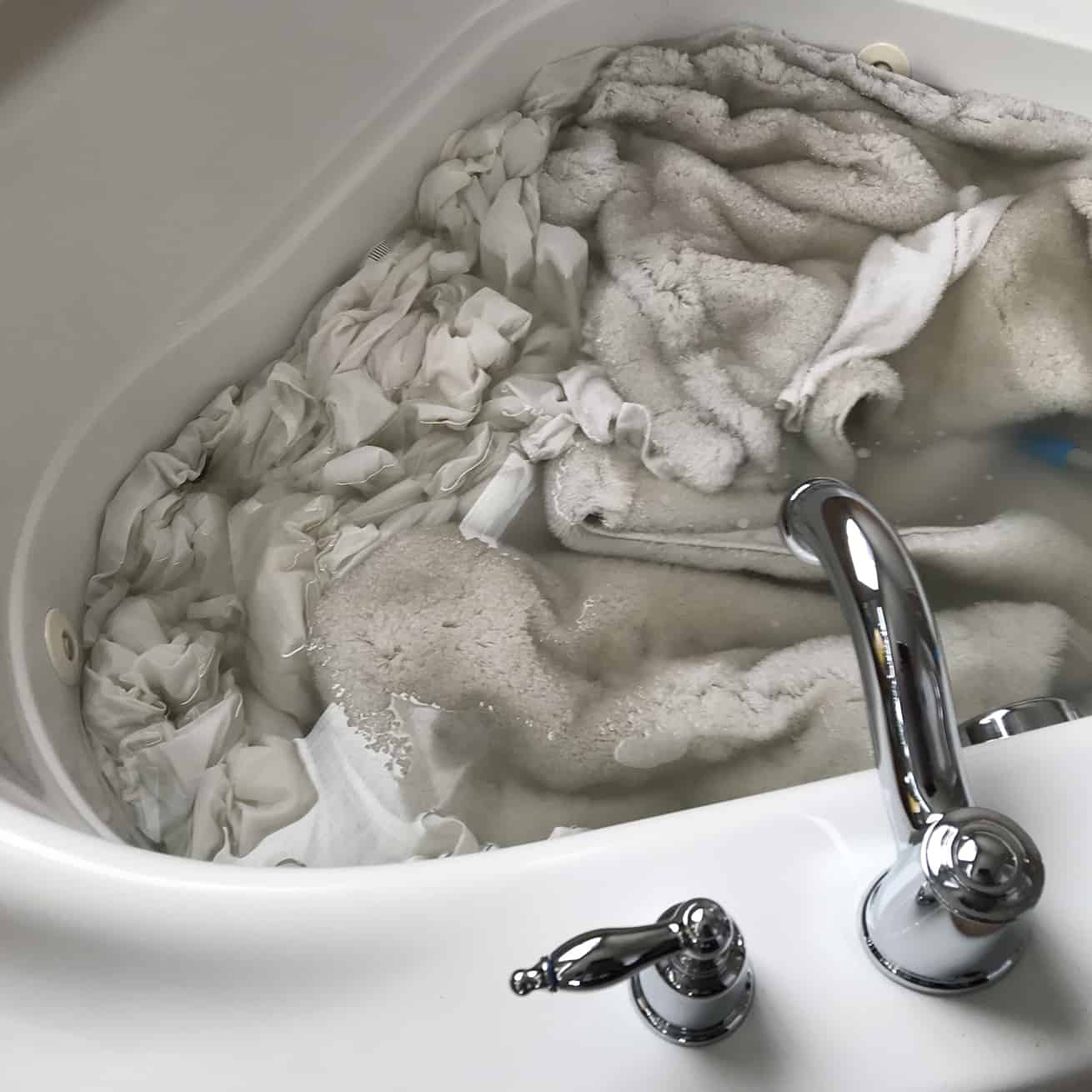
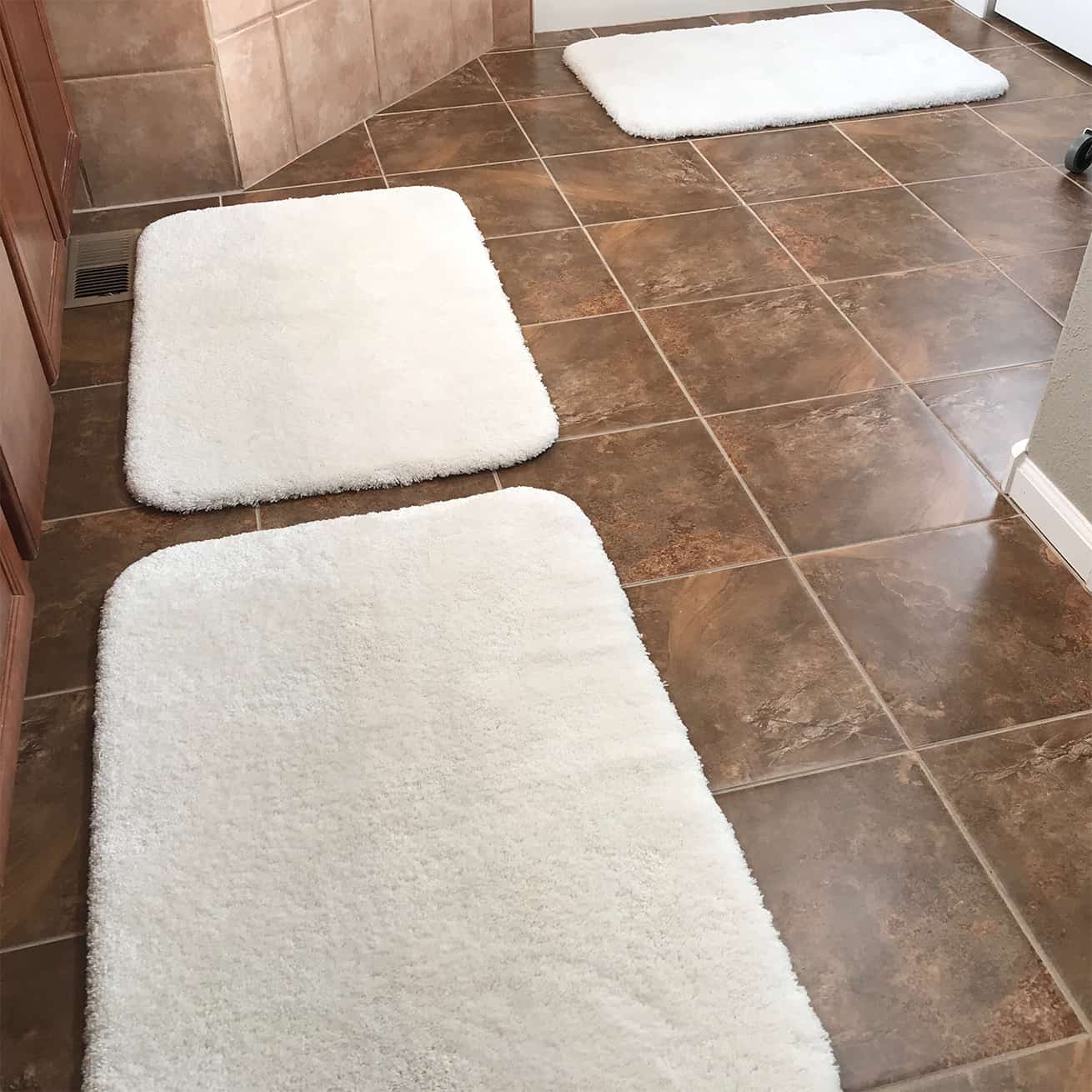
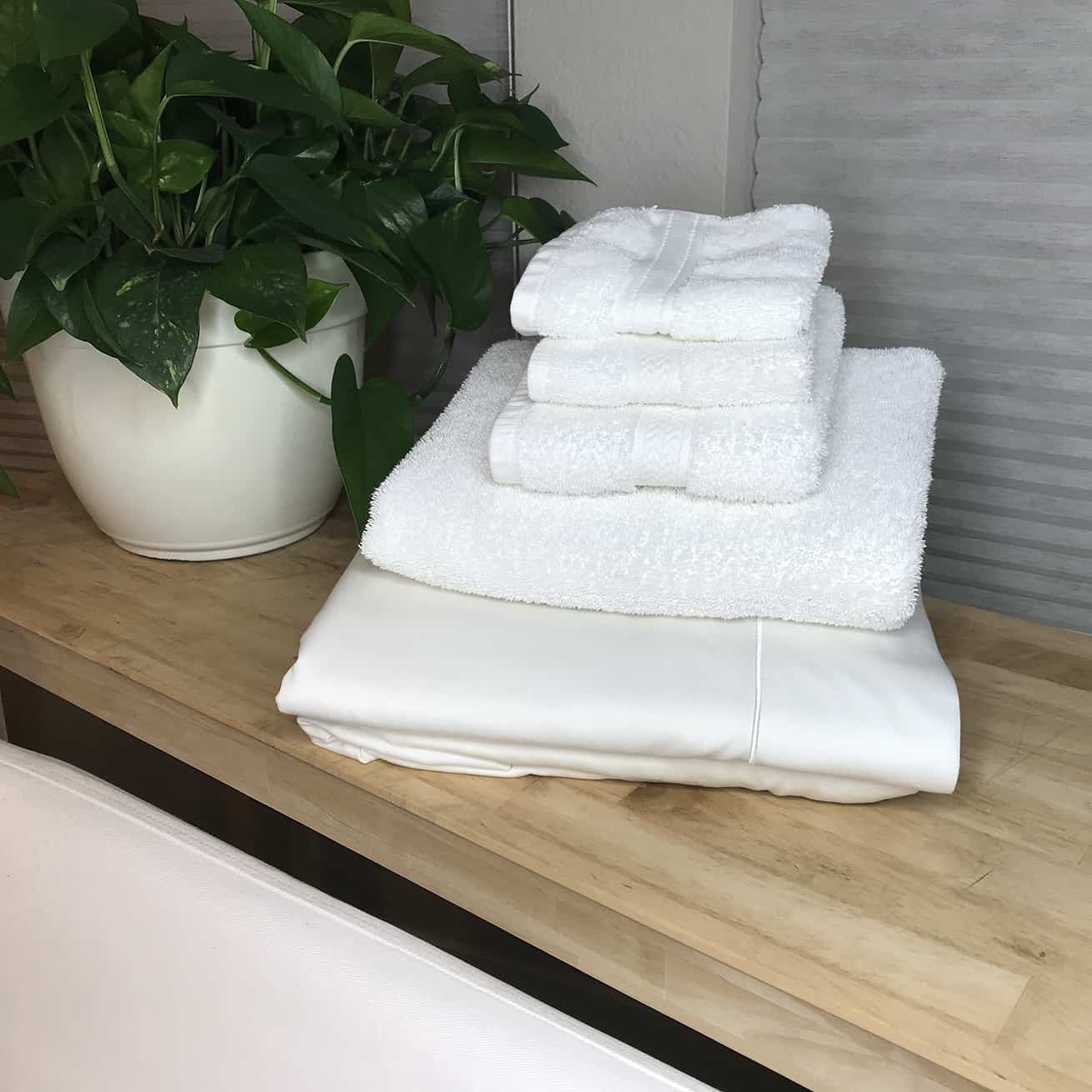





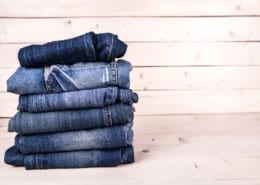
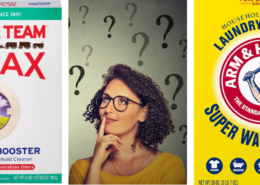

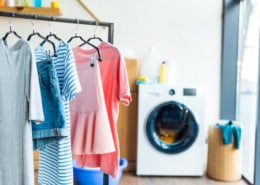
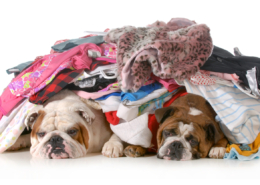
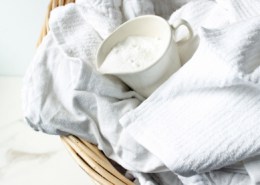
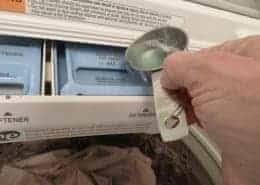
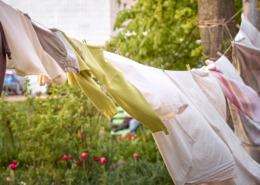
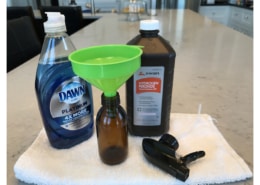


I have done this twice and some whites are still dingy and towels still feel rough. We have hard water- could this be the problem?
Could be, but also could be that there is so much residual build-up, it’ going to take a few times through the stripping process. Keep at it and make sure you are not adding too much detergent when you put them through regular laundry. And always add vinegar to last rinse!
Hard water contains excessive minerals and yes this can build up in fabrics. But the washing soda “softens” water. It could take a few more sessions.
Wow! I wish I’d found this years ago before throwing away several “gray” t-shirts. I have some problems with dinge, but mostly my towels become very stiff. I suspect it’s from the hard water. I’m going to try this anyway, to see what the result is!
If you have hard water Iron Out is a godsend.
Does this process remove yellowing? Is it safe for septic systems?
Yes and yes safe for septic. Borax is actually very GOOD for a septic system.
This did not work for me!☹ My water was hot, but not 140. Could that make a big difference? Very disappointed since it’s a lot of work.
HOT water is essential! I mean super, boiling hot. And you need to keep it hot. That means pouring a big pot of boiling water if necessary. And you bet, it is a lot of work. But done right, the results are more than worth the effort and the hot water. Can you turn your water heater up to 140 or greater, just for this occasional task? That would be ideal.
Hi Mary,
I would like to try this with the Persil detergent but the Amazon link says unavailable … ?
Hi Lydia … Here is an updated link: Persil ProClean Enzyme Detergent
I found Tide Laundry Powder with Enzymes at our local hardware store.
I’ve been battling (and complaining about) gray whites and lights ever since I got a front loading washer. That was following a move to a home with well water, as well. I have tried myriad products and methods to whiten, but not this one. I will be buying a soaking tub ASAP!
I’ve used your technique twice with great results. The first was with some bed linens. The pillow covers had years of stains from body oils, sweat, and drool that bleach couldn’t touch, and the stains came out! Yesterday I stripped our terrycloth bathrobes. Wow, the water turned a disgusting dark grey, but the robes practically glow now. Years of body oils and coffee stains just disappeared.
Can I start the stripping process in the washing machine instead of a bathtub?
Mary, I have to tell you about a recent experience at Walmart. I stopped in front of display of assorted products that looked like they had all been selected from your column and assembled together. (I regret not taking a picture now.) A lady came along and picked up the Persil, borax, and washing soda. I asked her if she reads Mary Hunt’s posts. She said she didn’t know who Mary Hunt was, but she had seen a post about cleaning white rugs in the bathtub and these were the ingredients needed. I told her, “Yep, that’s Mary!”
Today I saw a very similar article about laundry stripping by Speed Queen.
You know works? WineAway. It’s an organic stain and needs something that will work on that. You got to put a little scrub action on the stains too. Recently I had a big red wine spill and no Wine Away and dumped Woolite instaclean w Oxy carpet cleaner for pet stains. The red wine went away like magic. No scrubbing. This is probably less expensive if it works for tire tracks. I buy the Wine Away on Amazon.